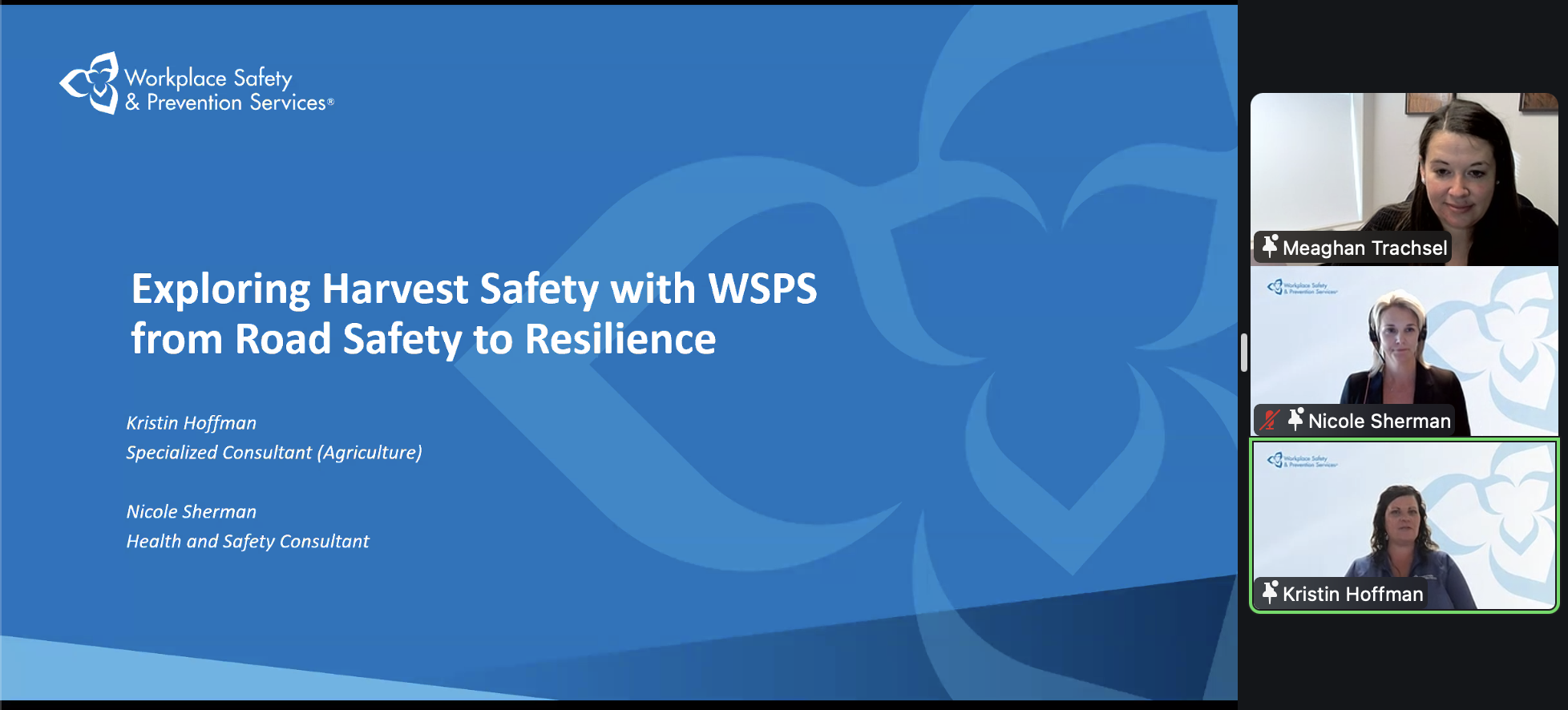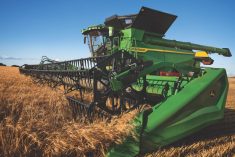Applications are now open for a federally-administered $35 million emergency on-farm support fund to help limit the impacts of COVID-19 on farms and on-farm workers.
Aimed at farm workplaces and employee living quarters, the fund is being managed by Agriculture and Agri-Food Canada (AAFC), but cost-shared with participating producers at a 50-50 level.
Money is coming from a $58.6 million federal package announced in July, focused on better supporting temporary foreign workers and strengthening employer inspections.
As of Monday the fund is available for producers to apply in Alberta, Saskatchewan, New Brunswick, Newfoundland and Labrador and the territories.
Read Also

Tips for staying safe this harvest season
Kristin Hoffman of WSPS explains measures for increased farm safety around harvest season
“Some (provinces) preferred to see the federal government manage the programs, others preferred to manage it themselves. Some already have a similar program that they will be able to improve, or make it more generous, or include a longer list of eligible expenses,” Agriculture Minister Marie-Claude Bibeau said when the program was announced Monday.
Programs being developed and delivered in the other provinces — British Columbia, Manitoba, Nova Scotia, Ontario, Prince Edward Island and Quebec — will be announced in coming weeks, Bibeau said.
Money from the fund can be used on direct infrastructure improvements to living quarters or work stations, the creation of emergency or temporary housing and to purchase personal protective equipment (PPE).
Each applicant can receive up to $100,000.
According to AAFC, “an additional 10 per cent will be provided to women and youth applicants making the split 60:40 as the government is taking steps to promote and empower women and youth in the agricultural sector.”
Bibeau said this will apply in instances where farm businesses are majority-owned by women or young producers.
“The biggest diversity challenge we have is with women and youth, but there is certainly indigenous and black community (members) that could be included in this privileged cost-sharing, absolutely,” she said.
Greenhouses, which employ a significant portion of Canada’s migrant workforce, are also eligible to apply for the funding.
In her virtual press availability with reporters, Bibeau said AAFC will put a priority on the “highest-risk farms for COVID-19 outbreaks” to receive funding.
“It will be based on the working environment, housing conditions and the number of employees is fundamental element of the risk of contamination from one to the other,” she said. “The overall evaluation of the working environment and housing environment, and the number of workers.”
According to her, producers can expect to receive money roughly 30 days after they file their application. Eligible costs are retroactive to March 15, and the fund will be available until the end of February.
When the plan was first announced in July, Employment Minister Carla Qualtrough said government needed to take further steps to protect workers because of reports of “inappropriate behaviour and unsafe working conditions.”
During her press availability, Bibeau said the responsibility to ensure the best measures are in place to protect workers is a shared one.
“We have to remember that these migrant worker programs are primarily labour programs, and then comes the immigration or temporary immigration part of it. We want to be extremely careful that any workers, migrants or Canadians, are well protected, that we put sufficient measures in place,” she said.
“Obviously COVID has put the light on the weaknesses of this program and I think it’s always important to remind people that the vast majority of farmers and agri-food employers are good employers who care for their employees, but there are bad ones. This is why we’re strengthening the measures to identify them, with more follow-up and inspections, better collaboration with the provinces and the foreign country consulate and embassies.”
Part of the $58.6 million funding commitment from July included $16.2 million to be used to hire new inspectors and ensure all allegations against employers are addressed.
Each year, 50,000-60,000 foreign agricultural and food production workers come to work in Canada, with 2019 marking a high-water mark for the number of workers.
According to Bibeau, Canada has received about 84 per cent of the number of foreign workers it took in last year.
Throughout the pandemic, there has been a heightened focus on the conditions of TFWs in Canada, in part due to outbreaks and COVID-19-related deaths among some workers.
July’s funding announcement included plans to begin consulting with the provinces and territories on mandatory requirements for the TFW program in the months to come.
“We have to make it easier for the good (employers) and very much harder for the bad ones,” Bibeau said.
— D.C. Fraser reports for Glacier FarmMedia from Ottawa.
CORRECTION, Oct. 5: A previous version of this article stated the program was to be 50-50 cost-shared between Ottawa and participating provinces. We regret the error.













